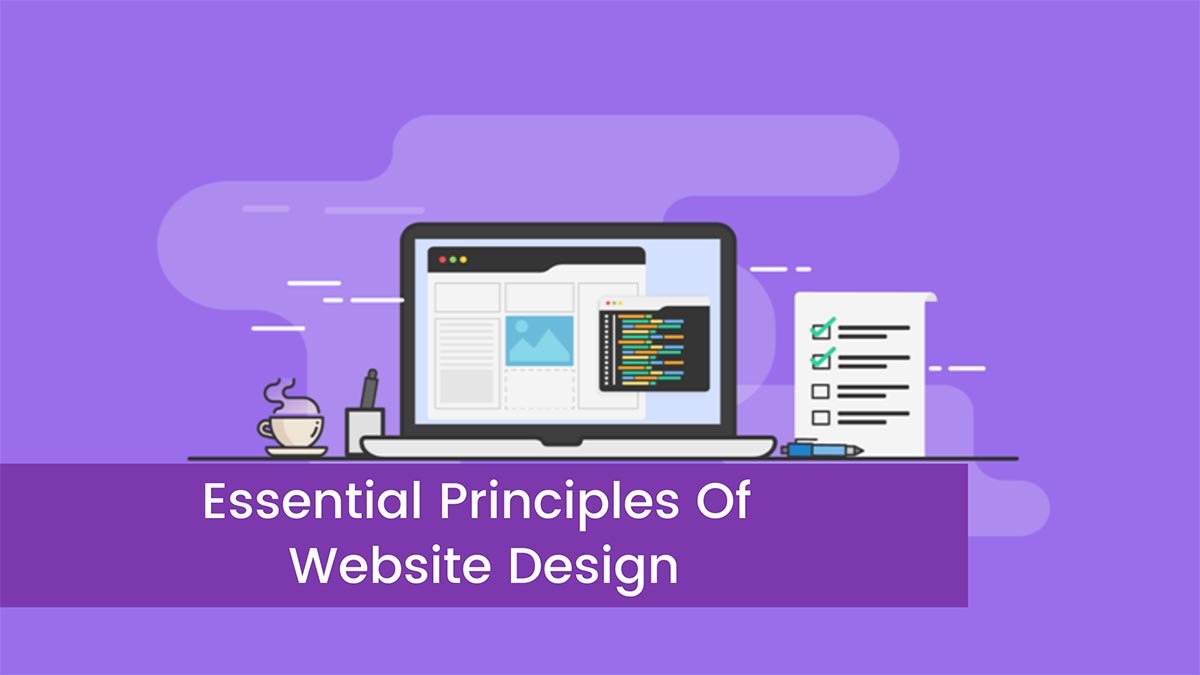Making a visually appealing website has never been easier than it is right now. You don’t need to spend a fortune on a professional-looking website; all you need to do is join up for one of the many free website builders.
To be fair, you could be forgiven for believing this is a well-done website. even if a website may appear to be functioning and user-friendly, this is not always the case.
The antithesis of good web design is a generic, non-tailored website that isn’t developed with your specific end-user in mind. users’ perceptions of a website’s usability are the ultimate determinant of its effectiveness.
What Does It Mean To Design A Website?
When you’re utilizing a website, web design is what gives it its overall appearance and feel. Designing and creating your website’s structure and layout, as well as its visual aspects, such as colors, fonts, and graphics.
Design work, user experience design, user interface, search engine optimization (SEO), and content production are all components of web design that work together to produce a website’s finished experience. All of these factors have an impact on the way a website appears, feels, and functions across various platforms.
In contrast to web development, which consists of writing the code that actually powers a website, web design focuses on aesthetics.
Websites require a combination of design and development. Website designers and UX developers have unique skill sets, yet it is possible to discover web designers that are also web developers.
A mockup is a visual representation of what your website will look like in the future. The artistic aspect of creating a website is the responsibility of a web designer.
Web developers, often known as engineers or coders, take the mockup your web designer created and convert it into a coding language so that it can be displayed on the web. Websites are made functional by custom-coding widgets and other tools, which is commonly done by web developers.
Creating a user-friendly website is the job of a user experience developer or UX developer. They have both technical and creative expertise, and they put it to good use in building websites that people want to visit and stay on for a long time.

The Five Essential Principles Of Website Design
Aside from the obvious aesthetics, there is a slew of other elements to consider in website design. To put it another way, great web design focuses on a site’s utility as well as its aesthetic appeal.
Since your website is the first place many potential clients will see your company’s identity and values, you want it to make a good first impression. In addition, Google penalizes sites with high bounce rates and low conversion rates because of their poor usability.
We’ve compiled our top five web design concepts to help you make an impact on your audience and dominate the search results.
1. A Crystal-Clear Goal
Every well-designed website meets the requirements of its visitors. In order to create a website that is useful to its visitors, it is essential to have a very specific goal in mind.
Every site, page, and segment that a web designer works on has a specific goal in mind. This could be anything from delivering data and giving amusement to facilitating engagement and executing a transaction, among other possibilities.
Overly cluttered websites don’t work. A cluttered page only serves to confuse and distract the reader.
2. An Expeditious Loading Time
It doesn’t matter if every component of your site has a clear purpose if it takes too long to load.
Unfortunately, in today’s world of limited time and limitless options, very few people are willing to wait for a website to load slowly.
There is no shortage of tools and techniques that designers and website owners may employ to speed up the loading time of their sites in order to satisfy these consumer expectations.
Images can be reduced in size, code combined into a single CSS or JavaScript file, and HTML, CSS, and JavaScript can be compressed. You should use Google PageSpeed Checker to keep track of any improvements you make to speed and performance.
3. Typography
Typography is often disregarded, despite the fact that a website’s text occupies a large portion of the page and reading is one of the most common online activities.
Typography can make or break your website, so make sure you nail it. Arial, Arial, and Verdana are among the most popular sans serif typefaces because they are easy to read online.
It is best to use a font size of 16 pixels. For a more streamlined appearance, it’s best to limit the number of point sizes to no more than three. There should be no more than three different typefaces used in the body of the document and the elements like buttons.
4. Interaction
Clear and concise storytelling is as crucial to web design as obeying the fundamentals of typography.
Regardless of the medium, your message must be clear and concise so that your audience can absorb it fast and easily. Making use of bullet points and subheaders is an excellent way to accomplish this, as is organizing menus and graphics hierarchically.
When it comes to website communication, adding more content isn’t necessarily the answer. The finest websites convey their message in the fewest possible words and visuals.
5. Designed To Be Mobile-Friendly
For a long time, responsive web design was considered an optional extra. Websites that aren’t compatible with a wide range of devices and screen sizes will have a difficult time attracting new visitors and performing effectively in search engine results.
Starting from scratch is the best way to ensure that your website is optimized for mobile devices. In the absence of a dedicated mobile site, you can construct a distinct, mobile-optimized version of your main site.
Having a mobile-friendly website is now a necessity, given the growing popularity of mobile devices like smartphones, tablets, and now phablets.
The Take-Away
The field of web design is always changing. In order to ensure that your website continues to perform effectively into the year 2020 and beyond, call Mediaone right away to learn how these five web design principles might benefit your site.
For us at MediaOne, the difference between a successful company and an also-ran can be the result of a unique, personalized design. Connecting with your website visitors is no easy task, especially when you are attempting to strike a balance between aesthetics and functionality. With a decade of experience in web design/development, MediaOne is able to help you. Contact us here for a FREE consultation now!




